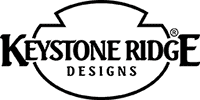April 26, 2018
How To Create Safer Public Spaces With Site Furnishings
It’s a nice thought to picture all of the installations of site furniture as picture-perfect utopian public spaces where the sun always shines, crime doesn’t exist and public safety is not a concern on anyone’s mind. Beautiful spaces do indeed exist all across the country, but public safety always needs to be a priority and site furniture can be used as a tool to help maintain the beauty and enhance the public’s sense of security.

Research has shown that "the proper design and effective use of the built environment can lead to a reduction in the fear and incidence of crime and an improvement in the quality of life." That’s the theory behind Crime Prevention through Environmental Design (CPTED), an urban planning practice that studies how the built environment impacts social behavior. The key strategy is to use design to influence offender decisions that precede criminal acts.
While we may not be the experts on all of the finer details of CPTED, we are the experts in site furniture and can offer suggestions on how site furnishings can be incorporated into planning for public safety and the prevention of crime. Subtle designs changes in the pre-planning stages of design can result in a cleaner, safer environment. Here we will break it down into 3 categories as it relates to site furniture: Seating, Perimeter Security and Litter Management.
Seating
- Benches – We all know the basic function of benches as a resting place along paths or sidewalks but the additional benefit is that the elevated seating allows for broad observation of the surroundings, giving users a greater sense of control and natural surveillance. The more benches that are available along the way, the more inviting it becomes. It allows users to see and be seen to help discourage crime.
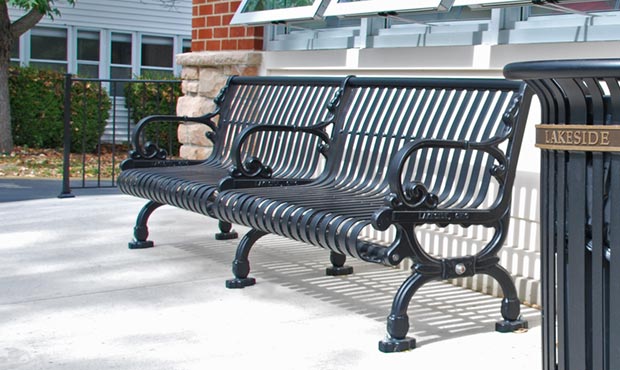
Also, consider how simple bench customizations can address improper usage. Center arms can easily be added to a bench to deter sleeping situations and skateblocks installed on the edges of a bench can prevent damaging skateboard traffic. - Table Sets - Single-seating furnishings and small tables are becoming increasingly popular in street furniture as an alternative to benches with extra arms. Table sets promote more social interactions and create a welcoming atmosphere.
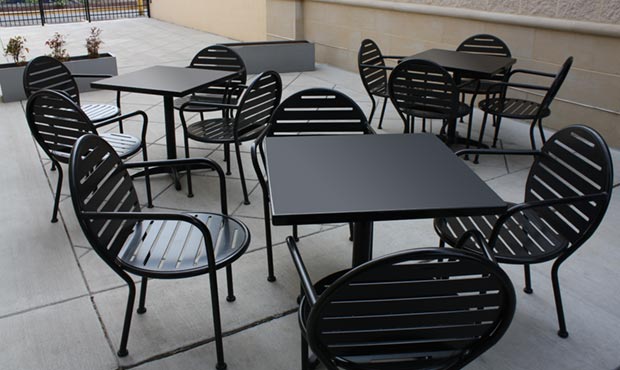
- Leaning rails - If you have an area where you would like to discourage extended loitering, leanings rails are an excellent way to provide a limited form of seating in a space-saving solution.
Perimeter Security
- Bollards - Limit access to restricted areas, private spaces or poorly lit alleys with the use of bollards or decorative fencing. Options for removable bollards allow for closing off areas of isolation at certain times of day.
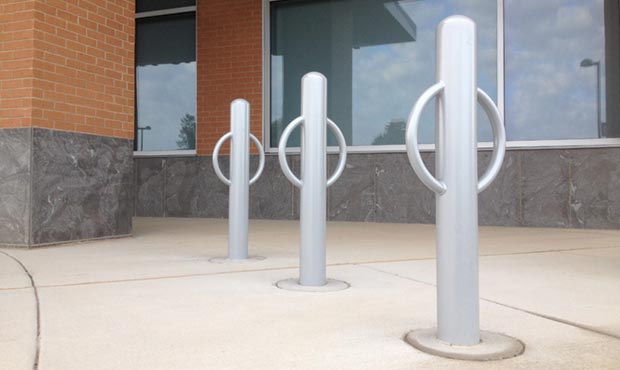
- Signage - Public paths should be clearly marked and signage should provide easy directions to parking and entrances. Knowing where to go allows pedestrians to feel safer and more confident in where they are going.
- Planters - Strategically installed planters add life to a space with flowers and greenery while also being used as a decorative way to establish a perimeter and provide natural access control to keep unauthorized persons out of a particular space. The low profile of planters also helps to keep open site lines and visibility of potential vandalism.
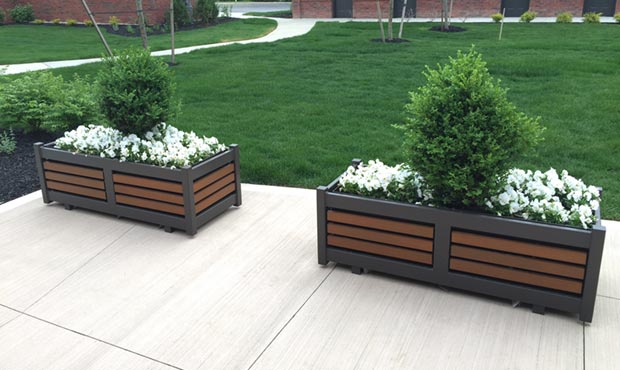
Litter Management
- Trash Cans - It’s no secret that clean streets offer an intangible sense of security and a sense of community pride. Well thought out trash can placement encourages proper usage and less littering. Maintaining a positive image helps to deter unwanted activities.
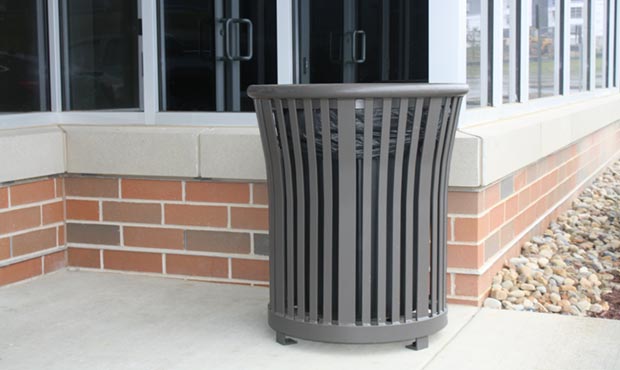
- Smoking Receptacles - Keeping smoking areas separate and defined with appropriate ash receptacles keep cigarette butts in their place while not disrupting the air quality of your main public spaces.
With all of these furnishings, durability definitely plays a role. Durable, vandal-resistant materials that are low-maintenance and easy to clean help to keep public perception positive.
There is no one-size-fits-all solution to promote safety and prevent crime, but outdoor furniture can easily add to the pedestrian environment and offer a greater sense of ownership and safety in your public spaces. The installation of furniture helps to encourage more activity and with more public activity and more eyes on the street, crime becomes less likely. It’s a small piece of a much larger puzzle but every subtle change can make a difference.
ARCHIVES
- Proudly Made For America's Public Spaces
- Summer Starts Outside
- Site Furnishings In Historic Streetscapes
- Tourist Destinations: Taking A Seat At America's Top Attractions
- March Maintenance: Preparing Public Spaces for Peak Season
- Why Quality Matters: The ROI of High-End Site Furnishings
- The Best Time to Invest in Outdoor Furnishings
- Celebrating 100 Blogs
- Hidden Site Furniture Gems: Unique Offerings from Keystone Ridge Designs
- Designing Cohesive Outdoor Spaces with Coordinating Site Furnishings
- The Role of Benches in Public Spaces: More Than Just Seating
- Site Furnishings With Custom Colors - Creativity With Color
- American Makers: Celebrating Our Site Furniture Manufacturing Team
- Love Letter To Litter Receptacles
- The Unique Beauty And Benefits Of Wood-Grain Aluminum By Keystone Ridge Designs
- Keystone Ridge Designs Celebrates World Landscape Architecture Month
- Sustainability At Keystone Ridge Designs
- Mix And Match Site Furniture Designs
- Planning For Planters
- Downtown Decorations: Deck The Streets With Benches & Holly
- Customized Site Furniture Solutions: How To Tailor Site Furnishings To Fit Your Space
- The Making Of A Streetscape
- Powder Coating Perfection
- Project Highlight - UPMC Mercy Pavilion
- Sing A Song Of Site Furnishings
- Transit and Bus Stop Furnishings
- Project Highlight - Latrobe, PA
- Litter Receptacle Lid Options
- Site Furniture Design Details
- Park Furniture
- What's New for 2023
- Trade Show Trips and Trends
- Giving Thanks And Giving Back
- What Are Site Furnishings?
- #FridayFabrication
- Outdoor Furniture For Schools
- Keystone Ridge Designs Top Sellers
- Site Furniture & Urban Design
- Production With Purpose
- Outdoor Chairs for Public Spaces
- Project Highlight: Cape May County Open Spaces
- Site Furniture Sets
- Residential Development Outdoor Trends
- ASLA Expo Recap
- 25 Years of Outdoor Furniture (Part II)
- Healthcare Site Furniture Trends
- Project Highlight - The Highline Pittsburgh
- Tips For Buying A Memorial Bench
- Zoo Furnishings
- Guide To Custom Signage And Graphics
- Outdoor Church Furniture
- Site Furniture Standards
- What Is A bollard?
- Outdoor Furniture For Ski Resorts
- Commercial Outdoor Furniture Trends for 2021
- 2020 Greatest Hits In Site Furnishings
- Design Timeline - Patented Site Furniture
- Spotlight On Garden Furniture
- 25 Years Of Outdoor Furniture
- Unique Outdoor Spaces
- Tips For Choosing Commercial Outdoor Table Sets
- Project Highlight - Longevity Bench Project
- Promoting Healthy Outdoor Spaces
- Signs Of Spring
- Project Highlight - Pianos About Town
- Powder Coating Color Trends
- All-Weather Site Furnishings
- Top 6 Traditional Commercial Bench Designs
- Top 9 Modern Outdoor Benches For Commercial Settings
- Made In The Shade: Choosing The Best Commercial-Grade Umbrella
- Outdoor Seating Alternatives: Think Outside The Bench
- Project Highlight - The Tracks At Brea
- Sites Of Summer
- Fundraising With Furnishings
- Durable Site Furniture - What Does That Mean?
- Customization 102
- New For 2019
- How It's Made
- Fall Photos And Furnishings
- Site Furnishings For Senior Living
- Project Highlight - Echo Park Lake
- Park Bench Workout
- Site Furniture And Planning For Public Safety
- The Art Of Bike Racks
- Site Furniture Materials 101
- What's New?
- Project Highlight - Carson City Revitalization
- Reducing Waste - It Takes All Sorts
- Putting The Fun In Furniture
- Site Furniture Placement Guidelines
- Project Highlight - City Of Weston, FL
- Focus On Photography
- Thankful At Thanksgiving
- How To Accessorize Your Landscape
- Why Powder Coat?
- Top 5 Unusual Customizations
- Site Furniture For Kids
- Customization 101
- Project Highlight - McCandless Crossing
- How To Save Money On Site Furniture
- Christmas With Keystone Ridge Designs
- Retail Branding
- Halloween Costume Ideas
- The Benefits Of Steel Site Furniture
- A Campus Standard - Why It's Important
- Guide To Plaques
- Four Trends In Site Furniture
